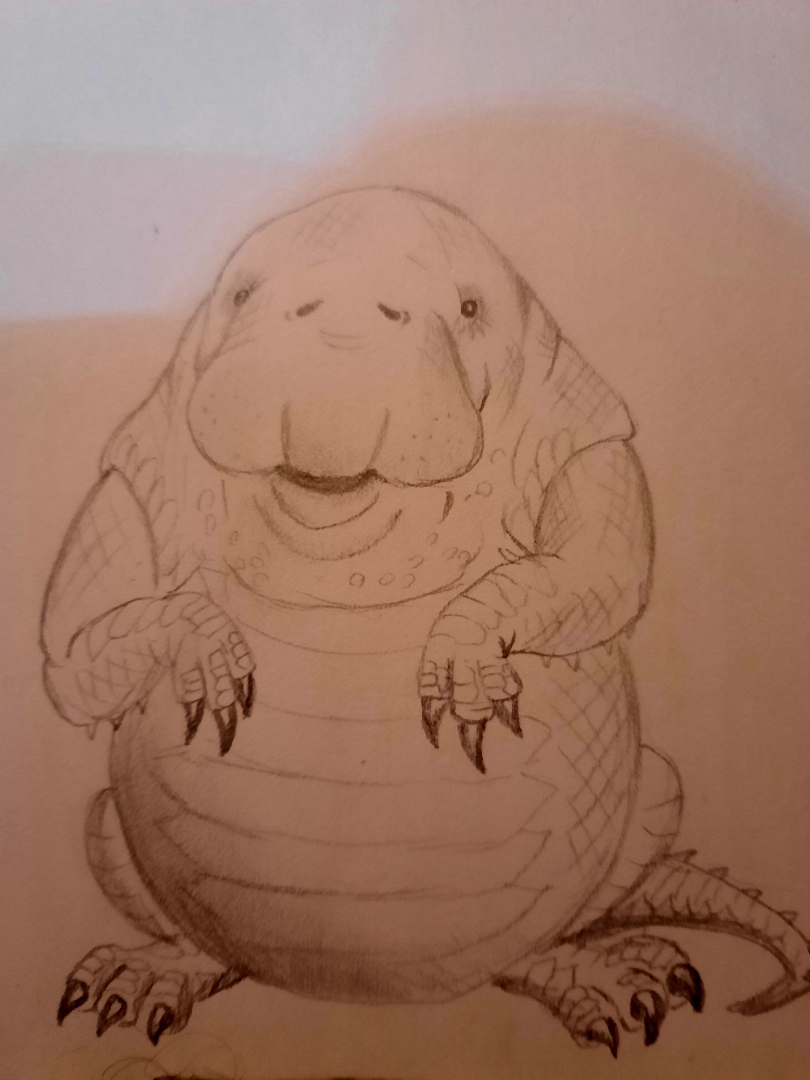Glig
Gligs are a species of small reptile which are extremely common in the desert. They resemble hand-length fat lizards, and are nocturnal, spending most of their time burrowed underground. They feed on microbes and tiny animals living in the sand. Swallowing mouthfuls of sand, gligs pass them through feathery frond-like structures in their throats, then spit the sand back out before swallowing the organisms captured in their filters.
As they swim through the sand in pods of up to one hundred gligs, the surface ripples betrayingly. Enormous numbers of gligs exist in the desert, often serving as prey for larger animals. They serve as the basis for much of the desert food chain.
Basic Information
Anatomy
Resembling a fat-bodied short-legged skink, a glig has a large toothless mouth which opens to reveal the fern-like fronds filling its throat, which it uses to filter the sand as their throats balloon and flex. Their backs are usually a dark reddish-brown, running down in narrowing stripes to their pale yellow undersides, but their colour can vary all the way to stony grey or pale blue. Full-grown adults reach up to eight inches long.
A glig will spend much of its time swimming through the sand in serpentine motions, its four short legs propelling it forward with only a slight ripple on the surface betraying its presence.
Genetics and Reproduction
Female gligs will lay clutches of up to ten eggs, often in communal nests which may hold scores of eggs. The eggs are rubbery and approximately 1cm in diameter, and will enlarge as they absorb moisture from the surroundings, deep underground.
Ecology and Habitats
Gligs are found in huge numbers throughout both the Raurin Desert and the wider Sahuul Desert. They are found in particular concentrations surrounding oases and other water sources, owing to the increased organic detritus in the sand.



Comments